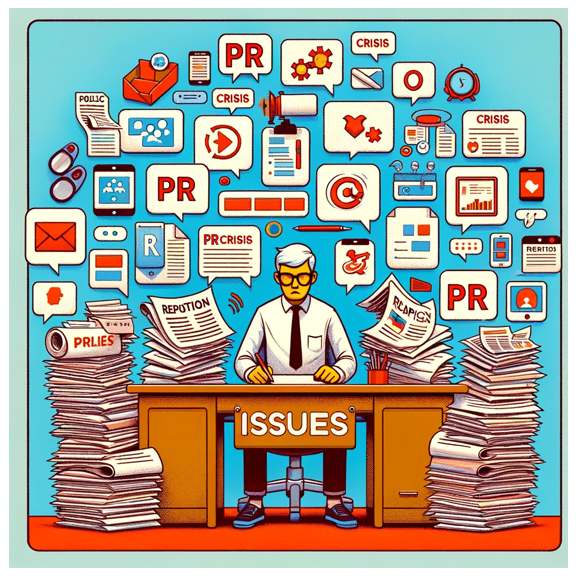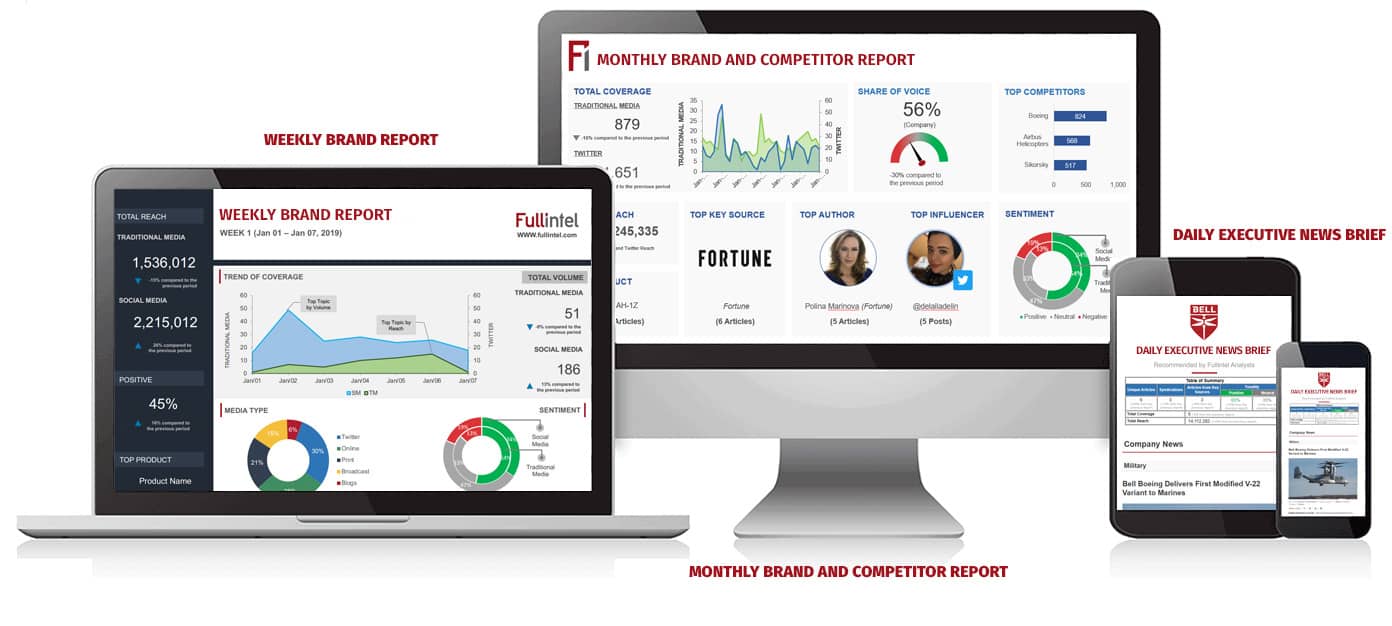
PR, communications, and media measurement are always evolving. That’s especially true for 2024 as PR professionals and their organizations stickhandle an increasingly unstable world, rampant misinformation, changing media preferences, new technologies, and other profound changes.
But fear not – to answer your burning questions and identify the top trends PR professionals face in 2024, Fullintel assembled an esteemed group of PR and measurement industry experts to gauge their thoughts about what’s in store for us this year.
Our panelists include:
- Sean David Williams, International Public Relations Research Conference (IPRRC) CEO; Associate Teaching Professor – Bowling Green State University (BGSU)
- Johna Burke, Global Managing Director – International Association for Measurement and Evaluation of Communication (AMEC)
- Jacque Coe, PR Consultant; Fellow PRSA; PRSA North Pacific board member
- John Friesen, Manager of External Communications and Media Relations – Alectra Utilities; President – Waterloo chapter of International Association of Business Communicators (IABC)
- Katie Paine, CEO – Paine Publishing; Founding Member – Institute for Public Relations (IPR) Measurement Commission; Senior Fellow – Marketing & Communications Center at The Conference Board
Here’s what they had to say.
1. Issues Management in a Chaotic World
From protests to boycotts to geopolitical conflict, the world in 2024 will likely be as chaotic as ever – which means issues management will be one of the biggest issues PR pros (and their organizations) will face.

The IPRRC’s Williams says recent evidence shows many organizations still have a lot to learn in this regard. “I’m not sure that, as PR people, that we really have our issues management cap on securely,” he says. Instead of being proactive, major organizations who try staying out of the fray often instead end up “backed into a corner” and having to say something.
“The old adage used to be that unless you could win the argument, you stayed out of it. And that has, perhaps rightly, fallen by the wayside,” adds Williams.
Jacque Coe of Jacque Coe Communications agrees, adding that the growing polarization and politicization of the information landscape means organizations will need PR at the table to help navigate reputation management in such a volatile world.
“It used to be that if you put your head down as a company and did a good job and took care of your employees, you could be pretty resilient. You didn’t really need to worry about it,” she explains. “Now, I don’t necessarily think that’s the case. We’re now seeing those pockets of choppy water that can seemingly come up from the depths at any time.”
In both Coe and Williams’ view, PR pros now more than ever must be strategic advisers to the executive team with the ability to influence business decisions before they’re made. “Comms folks need to not only be in the room, but at the table right next to the CEO for 12 months of the year,” says Coe.
Williams adds that at the end of the day, companies and their communications teams need to be proactive but also extremely careful in their messaging. “You have to look at your own values in leadership and the values of the organization you serve,” he says, “And do what you think is right.”
2. The Great Social Media Migration
The recent turmoil on Twitter/X has many industry watchers noticing something of a migration in PR interest and activity to LinkedIn, Instagram Threads, WhatsApp, Telegram, and other social networks.
Jen Berson of Jeneration PR predicts in an article on LinkedIn that this migration will affect PR pros’ media relationships and client operations, along with how they share and promote their work.
But an even bigger challenge around this migration is that many of these platforms aren’t as easily monitored or analyzed, especially using SaaS solutions, says Paine Publishing’s Katie Paine. “Content is moving away from the platforms you can monitor and onto platforms where you have no idea what’s being said. And, frankly, people are now being influenced more by their pickleball WhatsApp group than they are by the New York Times,” says Paine.
“And that raises the big question: How do we listen to understand what our target audiences are actually paying attention to? It’s not so easy to listen anymore. So I think there’s a big gap in the data that we don’t yet know how to fill.”
AMEC CEO Johna Burke says a major impact of this migration is that “those who rely on vanity metrics for social measurement will be lost. It will feel like a spiral effect.”
But she adds that those with multiple communications measurement touch points and a focus on outcomes and impacts will be less affected, because they’ll have multiple ways to understand the conversation and map it to the organization’s communications efforts.
3. Misinformation and the Shrinking Media Landscape
Misinformation is nothing new and has been used by bad actors for thousands of years, but technology has increased its reach, frequency, and impact – and will continue to do so in 2024.
Alectra Utilities’ John Friesen says misinformation also isn’t anything new for his organization, especially since the advent of social media. “We have an outage, for example, and someone posts a photo on social media of a transformer on fire in Eastern Europe,” he says. “And people here don’t know that it’s not related.”
He says the introduction of AI and automation tools will likely accelerate and amplify potential misinformation even more. “It creates a whole new host of challenges, and just kind of exacerbates existing ones that we were already concerned about.”
Contributing to the environment of misinformation is a shrinking media landscape that Friesen says has eroded trust in media and will continue to cause challenges for PR pros in 2024. “Those of us in the PR space, it’s those relationships with journalists that are really the core of our work. And if those sources don’t exist, you’re in a position where things get very difficult.”
Friesen says his team uses media monitoring religiously to stay on top of what’s being said. When misinformation is identified he and his team work to publicly correct the record, while presenting their organization as the voice of truth in their area of expertise.
4. The Need for Authenticity
This prevalence of misinformation and fake news – along with the existential risks for organizations that come off as inauthentic – means most of our panelists predicted we’ll see a renewed focus on authenticity, accuracy, and credibility in 2024.

“Today’s consumers can spot fake, superficial content from miles away,” says Berson in LinkedIn. “The best way to establish trust with your client’s audience in 2024 is to display authenticity and honesty at every level.”
Burke says companies now more than ever need to back up their words with accountability, especially when taking a stance on societal or political views. “If they aren’t living up to those positions within their own organizations, I think that pressure is going to be unrelenting.
“And that’s where there’s going to be that kind of self-inflicted crisis from organizations working very hard to be in conversations, but that don’t have that authenticity behind them.”
Coe says authenticity has to start with internal and employee communications because if your employees don’t believe you’re authentic, you’re likely in trouble.
“Right now, the average individual has an extreme amount of power in their pocket, on their mobile phone,” she says. “And that can go any number of ways. So PR professionals better be tapped into their employees, and they better know who their internal and external stakeholders are. If they don’t, I’d say they’re living on borrowed time.”
5. Artificial Intelligence
AI is on everyone’s minds in practically every industry, but the lightning-fast advent of generative AI for business has given the conversation much more urgency in PR and communications circles.
Alectra’s Friesen says he’s not worried about AI taking his job. Rather, he says, it’s an exciting tool that can help scale communications teams. “As writers, as communicators, there still needs to be somebody directing that strategy,” he explains, “and making sure that the language is appropriate for the organization.”
Aside from other well-known issues around AI accuracy and hallucinations, Burke points out that AI-generated content is not copyrightable, meaning comms and marketing groups must be extremely careful about how they use generative AI tools. “There’s no recourse” if a competitor decides to steal all your brand messaging or reskin your latest thought leadership whitepaper with their branding.
“That’s why you see a lot of companies adding a disclaimer saying ‘this content is written by a human,’ to validate that there is copyright attached to that content.”
Alectra’s Friesen adds that new tools for PR pros, such as Fullintel’s PredictiveAI solution for identifying viral stories before they go viral, is another example of how AI can help PR pros do their jobs more effectively.
Indeed, BGSU’s Williams says PR measurement is where he sees the new and improved AI of 2024 making the most immediate impact. “AI has been around for a long time in automated content analysis, but you couldn’t count on the machines to accurately judge. They didn’t have the context.
“But now these tools have access to the entire store of human knowledge, and that means they’re going to learn over time.”
6. Never-Ending Upskilling
One side effect of AI and an ever-expanding roster of other technology tools and platforms PR pros must learn is the requirement – and expectation – of near-constant upskilling to stay relevant in such a fast-moving business environment.
That’s why it will be crucial for companies to offer continuous learning on an ongoing basis to both retain staff and keep skills sharp to enable the ongoing integration of new technologies and innovations.
Either way, Burke says the upshot is that PR pros will likely feel “even more overwhelmed” this year as their organizations and teams bring in more technology tools such as generative AI, because “comms people are time-constrained already.
“It’s the first time many comms people will use AI in a hands-on way,” she says.
Coe agrees, adding that the need for issues management and strategic advice mentioned earlier will likely put even more stress on comms teams who “are wearing more hats than ever before.”
That’s why another trend Coe sees taking shape is organizations needing to hire more for mindset than specific skills. “The pace of technology is changing so fast that people literally do not know what they’re going to need in a year,” she says. “So some companies are hiring people who are excited and want to learn and pick things up quickly.”
7. Integration of Disciplines
Williams says this wearing of many hats will likely continue as we see further integration of various types of professional communications, from advertising to crisis comms to thought leadership.
Williams teaches courses at BGCU that emphasize the integration of disciplines. That’s to provide “an understanding and appreciation for how those things can work together,” because he says integrated teams can be much more effective in certain scenarios.
“We’re trying to get to this point of pulling all these things together to determine which one of these levers we pull in certain circumstances. Advertising during a crisis: Not very useful. Organizational communication during a crisis: Very useful. So I think we’ll get to that point.”
Integrating teams can be controversial and risky, however. Some teams simply don’t want to integrate. It’s (often correctly) perceived as a money-saving exercise to save on headcount. And integrating various disciplines typically requires employees and leaders with broader and richer skill sets, which can lead to a top-heavy organization.
But the benefits of integration done right outweigh those negatives, Williams says.
“You can all get together and say ‘Okay, why are we hitting the same constituency with communications for four different departments when we could coordinate all this, we could pull all this stuff together and just have, you know, a more disciplined sort of attack. That way we’re realizing the benefits of integration, without incurring many of the organizational costs.’”
Stay on top of these and other top trends in your industry with Fullintel’s suite of media intelligence products, from media monitoring to influencer analysis to crisis response and issues management. Contact us today.


